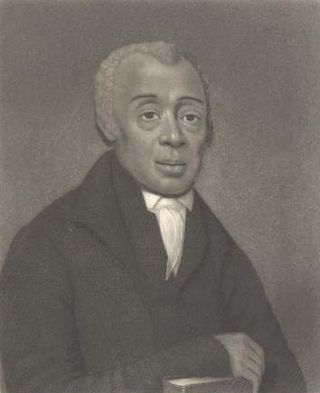
Richard Allen was a minister, educator, writer, and one of the United States' most active and influential black leaders. In 1794, he founded the African Methodist Episcopal Church (AME), the first independent Black denomination in the United States. He opened his first AME church in 1794 in Philadelphia.
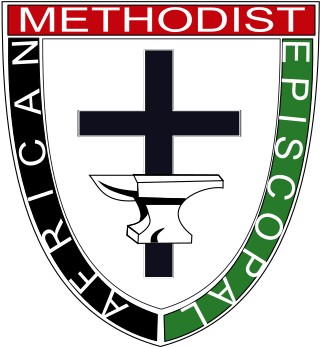
The African Methodist Episcopal Church, usually called the AME Church or AME, is a Methodist denomination based in the United States. It adheres to Wesleyan-Arminian theology and has a connexional polity. It cooperates with other Methodist bodies through the World Methodist Council and Wesleyan Holiness Connection.

The Christian Methodist Episcopal Church (C.M.E.C.) is a Methodist denomination that is based in the United States. It adheres to Wesleyan-Arminian theology. Though historically a part of the black church, the Christian Methodist Episcopal today has a church membership of people from all racial backgrounds.

The African Methodist Episcopal Zion Church, or the AME Zion Church (AMEZ) is a historically African-American Christian denomination based in the United States. It was officially formed in 1821 in New York City, but operated for a number of years before then. The African Methodist Episcopal Zion Church adheres to Wesleyan-Arminian theology.
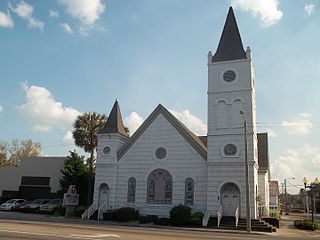
The black church is the faith and body of Christian denominations and congregations in the United States that predominantly minister to, and are also led by African Americans, as well as these churches' collective traditions and members. The term "black church" may also refer to individual congregations, including in traditionally white-led denominations.

Daniel Alexander Payne was an American bishop, educator, college administrator and author. A major shaper of the African Methodist Episcopal Church (AME), Payne stressed education and preparation of ministers and introduced more order in the church, becoming its sixth bishop and serving for more than four decades (1852–1893) as well as becoming one of the founders of Wilberforce University in Ohio in 1856. In 1863, the AME Church bought the college and chose Payne to lead it; he became the first African-American president of a college in the United States and served in that position until 1877.

John A. Lankford, American architect. He was the first professionally licensed African American architect in Virginia in 1922 and in the District of Columbia in 1924. He has been regarded as the "dean of black architecture".

The Big Bethel AME Church a black church on Sweet Auburn in Atlanta, Georgia.
The Bethel Literary and Historical Society was an organization founded in 1881 by African Methodist Episcopal Church Bishop Daniel Payne and continued at least until 1915. It represented a highly significant development in African-American society in Washington, D.C. Most of its early members were members of the Metropolitan AME Church where its meetings were held, while maintaining an open invitation for black Washingtonians from across the city. It immediately developed into the preeminent debating society and forum for racial issues in Washington, D.C. The prospect of a separation of schools for black children was heatedly debated in 1881–82 as were the ideas of Booker T. Washington and W. E. B. Du Bois in 1903. It was one of the stops of ʻAbdu'l-Bahá's journeys to the West.

Metropolitan African Methodist Episcopal Church is a historic church located at 1518 M Street, N.W., in downtown Washington, D.C. It affiliates with the African Methodist Episcopal Church.
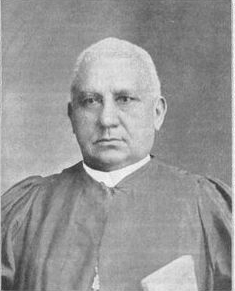
Henry McNeal Turner was an American minister, politician, and the 12th elected and consecrated bishop of the African Methodist Episcopal Church (AME). After the American Civil War, he worked to establish new A.M.E. congregations among African Americans in Georgia. Born free in South Carolina, Turner learned to read and write and became a Methodist preacher. He joined the AME Church in St. Louis, Missouri, in 1858, where he became a minister. Founded by free blacks in Philadelphia, Pennsylvania, in the early 19th century, the A.M.E. Church was the first independent black denomination in the United States. Later Turner had pastorates in Baltimore, Maryland, and Washington, DC.

Emanuel African Methodist Episcopal Church, colloquially Mother Emanuel, is a church in Charleston, South Carolina, founded in 1817. It is the oldest AME church in the Southern United States; founded the previous year in Philadelphia, Pennsylvania, AME was the first independent black denomination in the nation. Mother Emanuel has one of the oldest black congregations south of Baltimore.
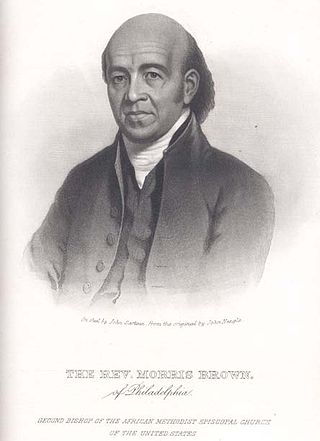
Morris Brown was one of the founders of the African Methodist Episcopal Church, and its second presiding bishop. He founded Emanuel AME Church in his native Charleston, South Carolina. It was implicated in the slave uprising planned by Denmark Vesey, also of this church, and after that was suppressed, Brown was imprisoned for nearly a year. He was never convicted of a crime.
John W. Stevenson was an African Methodist Episcopal (AME) Church minister. He was the financier and builder of the Metropolitan African Methodist Episcopal Church in Washington, DC, which was the largest black church in the country at the time of its building. He was a talented fundraiser and built a number of other churches and was pastor of many churches in Maryland, New Jersey, Pennsylvania, New York, and New England. He was an important figure in the church and eventually held the position of presiding Elder of the New York district.
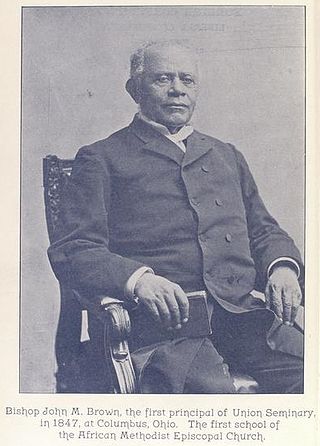
John Mifflin Brown was a bishop in the African Methodist Episcopal (AME) Church. He was a leader in the Underground Railroad. He helped open a number of churches and schools, including the Payne Institute which became Allen University in Columbia, South Carolina, and Paul Quinn College in Waco, Texas. He was also an early principal of Union Seminary which became Wilberforce University.

Bishop Singleton T. Jones was a religious leader in the African Methodist Episcopal Zion Church. Although he had little education, Jones taught himself to be an articulate orator and was awarded the position of bishop within the church. Besides being a pastor to churches, he also edited AME Zion publications, the Zion's Standard and Weekly Review and the Discipline.

Rev. Robert Henry Robinson (1824–1909), was an American minister, educator, and an activist for the rights of African Americans during the Antebellum period in Arlington, Virginia. He was born into slavery, but through the negotiation by his grandmother, Caroline Branham, he was freed at age 21 after an eleven-year apprenticeship. He was a minister at Roberts Chapel, an African Methodist Episcopal Church. He established a night school and debate team for black freedman. The Robert H. Robinson Library was named in his honor.

Bethel African Methodist Episcopal Church is a historic African American church founded in 1852 and is located in the Fillmore District in San Francisco, California. It was one of the earliest African American churches in the west. The church occupied several spaces in San Francisco over the course of its history, as well as gone by various names.

The Saint Andrews African Methodist Episcopal Church is an African Methodist Episcopal Church in Sacramento, California, founded in 1850. It was the first African American church in California and the first AME Church on the West Coast of the United States. It was originally located at 715 Seventh Street, which is marked by a historical plaque. This church is still active, and is presently located at 2131 Eighth Street in Sacramento. It is listed as a California Historical Landmark since May 5, 1994. It was formerly known as the Colored Methodist Episcopal Church and the Bethel African Methodist Episcopal Church.


















